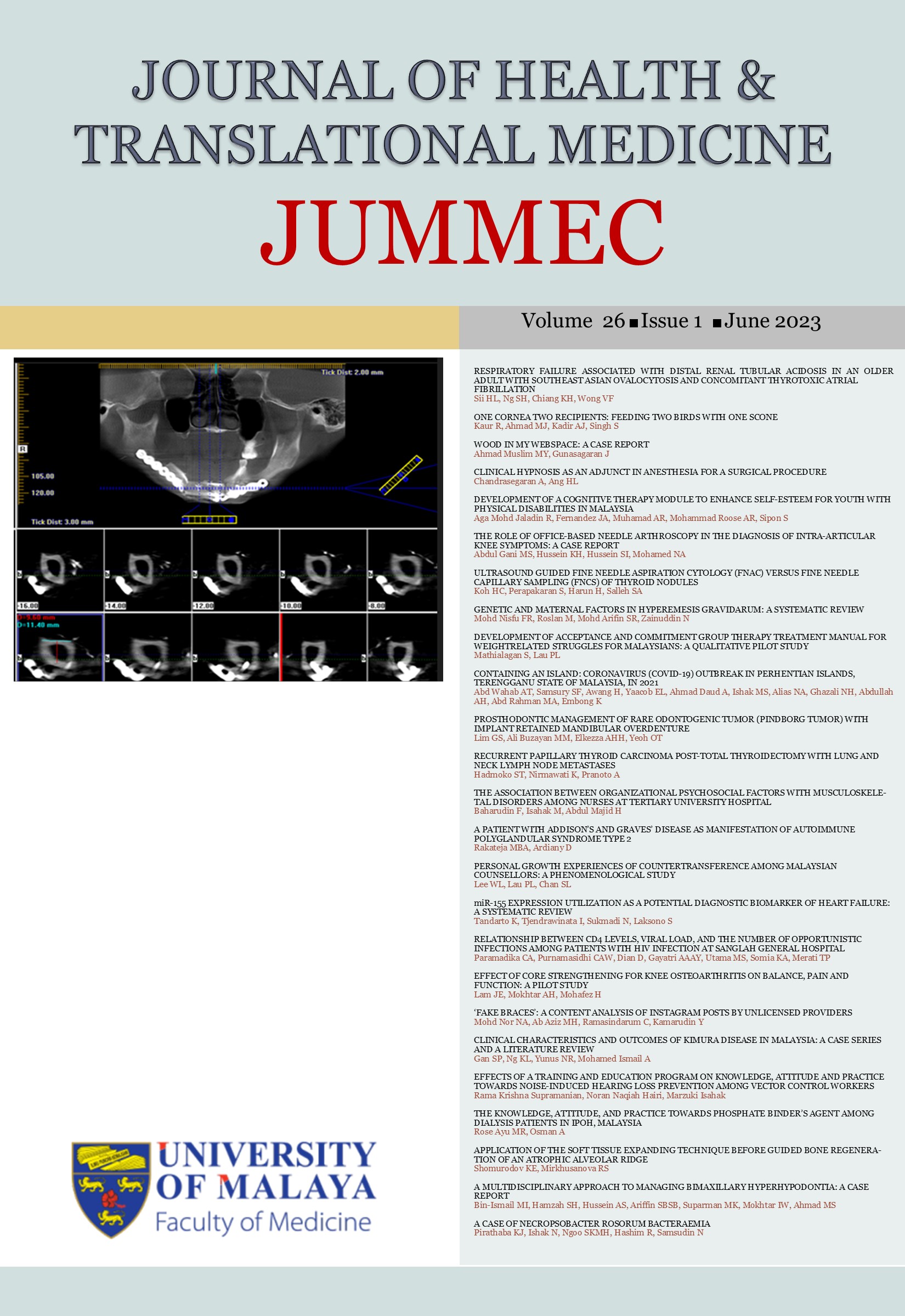CLINICAL CHARACTERISTICS AND OUTCOMES OF KIMURA DISEASE IN MALAYSIA: A CASE SERIES AND A LITERATURE REVIEW
Received 2022-07-13; Accepted 2023-02-22; Published 2023-03-24
DOI:
https://doi.org/10.22452/jummec.vol26no1.20Abstract
Kimura disease is a rare benign chronic inflammatory disorder of the soft tissue with predominant occurrences in young Asian male adults. However, there is limited information of Kimura disease in Southeast Asia. Hence, the clinical characteristics and outcomes of Kimura disease in Malaysia was investigated. Published Kimura disease cases from Malaysia were comprehensively searched in PubMed and Google Scholar up to December 2020 using the keywords “Kimura Disease” and “Malaysia”. Twenty-three papers were identified for review and case series of seven Kimura disease patients from a hospital in Malaysia were descriptively analyzed. A total of 60 cases were obtained from both sources. Eighty-seven percent were men with a male:female ratio of 6.5:1 and majority of the cases were Malays (77.1%). Median age of onset was 22.0 (IQR 12.5-31.5) years, while the median duration before diagnosis of Kimura disease was 2.0 (IQR 0.8-5.0) years. Head and neck region (95%) were the most frequently involved anatomical site. Peripheral eosinophilia was detected in 88.9% of the cases at presentation and renal involvement was observed in four (22.2%) patients. Surgery (57.5%) was the commonest first choice of treatment, followed by a combination of surgery and steroid (29.8%), steroid alone (10.6%), and a combination of steroid and immunosuppressive agent (2.1%). Local recurrences were observed in 28.6% of the cases. In conclusion, a much younger age of disease onset was found among Malaysians. A high recurrence rate of one in every four patients was observed, indicating the need for further evaluations of treatment strategies.
Downloads
Downloads
Published
Issue
Section
License
All authors agree that the article, if editorially accepted for publication, shall be licensed under the Creative Commons Attribution License 4.0 to allow others to freely access, copy and use research provided the author is correctly attributed, unless otherwise stated. All articles are available online without charge or other barriers to access. However, anyone wishing to reproduce large quantities of an article (250+) should inform the publisher. Any opinion expressed in the articles are those of the authors and do not reflect that of the University of Malaya, 50603 Kuala Lumpur, Malaysia.


